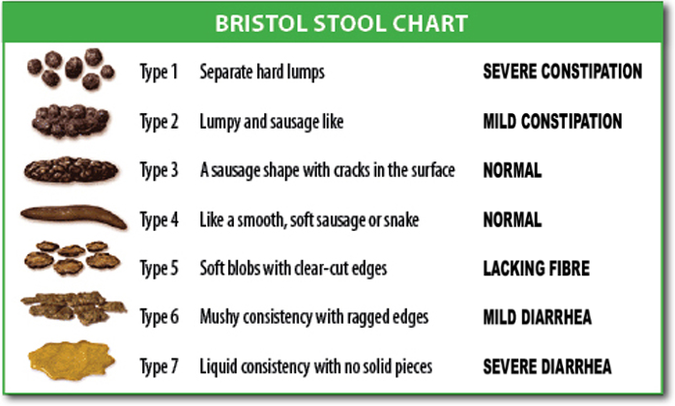What Type of Stool Indicates the Healthiest Body?
Mr. Yang, a 45-year-old man, sought medical attention due to chronic diarrhea, abdominal pain, and stools mixed with mucus and blood streaks. His doctor recommended a fecal calprotectin test, which revealed significantly elevated levels (>200 μg/g), indicating intestinal inflammation. A subsequent colonoscopy confirmed a diagnosis of chronic ulcerative colitis.
Abnormal stools serve as a visible “barometer” of digestive health, providing critical clues for early disease detection. Timely identification and intervention can effectively control inflammation progression and reduce the risk of cancer.
Evaluation Criteria for Healthy Stools
Bristol Stool Scale
The Bristol Stool Classification System categorizes stool morphology into seven types, offering a clear reflection of intestinal transit time and digestive function:
- Type 1-2: Hard, lumpy stools (indicate constipation).
- Type 3-4: Smooth, sausage-like stools (ideal, healthy form).
- Type 5-7: Loose or watery stools (suggest diarrhea or rapid transit).
Stool Color and Health Implications
Normal stools appear golden yellow or brown due to bilirubin metabolism. Abnormal colors may signal underlying issues:
- Black or Tarry Stools:
- Non-pathological causes: Iron supplements, bismuth medications, or black licorice consumption.
- Pathological causes: Upper gastrointestinal bleeding (e.g., gastric ulcers, stomach cancer). Persistent black stools accompanied by dizziness or anemia require immediate medical attention.
- Red or Maroon Stools:
- Dietary causes: Beets or red dragon fruit.
- Pathological causes: Lower gastrointestinal bleeding (e.g., hemorrhoids, anal fissures, colorectal cancer).
- Green Stools:
- Physiological causes: Excessive chlorophyll intake (e.g., leafy greens).
- Pathological causes: Gut dysbiosis (post-antibiotic use), infectious diarrhea, or insufficient bile breakdown.
- Pale or Clay-Colored Stools:
- Indicate bile duct obstruction, potentially due to gallstones, hepatitis, or pancreatic cancer.
Other Morphological Clues and Health Risks
- Floating vs. Sinking Stools:
- Floating: High-fiber diets causing gas production during fermentation.
- Sinking: High animal protein intake, possibly linked to colorectal cancer risk.
- Pebble-like or “Sheep Dung” Stools (Dry Stools in TCM):
- Suggest Qi deficiency or gut microbiota imbalance.
- Mucus or Blood Streaks:
- May indicate inflammatory bowel disease (IBD), intestinal polyps, or infectious enteritis.
Key Diagnostic Tool: The Clinical Value of Fecal Calprotectin Testing
Calprotectin is a protein that reflects neutrophil activity in the intestines. Its testing offers significant advantages:
- Non-Invasive Screening:
- Evaluates intestinal inflammation through stool samples, aiding in the diagnosis of IBD, adenomas, or colorectal cancer without initial invasive procedures like colonoscopy.
- Differential Diagnosis:
- Helps distinguish between inflammatory bowel disease (IBD) and irritable bowel syndrome (IBS).
- Treatment Monitoring:
- Tracking calprotectin levels dynamically assesses medication efficacy and relapse risk.
Post time: May-08-2025








